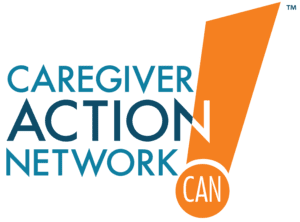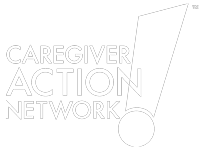The Human Cost of the Government Shutdown and Safety Net Cuts
The Human Cost of the Government Shutdown and Safety Net Cuts
By: Marvell Adams Jr. | CEO | Caregiver Action Network
Caregivers Are Holding the Line. Why Are We Pulling the Safety Nets Out from Under Them?
Everywhere I go, I meet caregivers who are doing everything right. They work long hours, raise children, and care for aging parents or loved ones with chronic conditions — often all at the same time. Yet every new wave of policy change — rising healthcare costs, threats to Medicare and Medicaid, and cuts to food and housing programs — feels like another blow to people already stretched to their limits.
For more than 63 million Americans, caregiving is not a choice. It’s an act of love — but also a financial risk. Caregivers spend a significant share of their income on care expenses. When healthcare premiums rise or safety nets shrink, that fragile balance collapses. Suddenly, caregivers are left deciding whether to pay for food, medications, rent, or their own care.
This isn’t just policy. It’s personal.
The Human Cost Behind the Cuts
When I think about what happens when safety nets fray, I think about my mother.
At one point in her life, she was left with nowhere else to turn. Food stamps — SNAP — became a lifeline that quite literally made the difference between eating and paying the bills. That support didn’t make her life easy; it made it possible.
Now, imagine the millions of families in that same position today — caregivers trying to hold it all together as healthcare costs rise, housing becomes more unstable, and benefits meant to keep people afloat are scaled back.
When Medicaid reimbursements are reduced, it means fewer hours of home care for a loved one. When ACA premiums go up, it forces caregivers to choose between coverage and groceries. When SNAP benefits are cut, it’s often caregivers who are skipping meals, so their family doesn’t have to.
These decisions are being made every day in kitchen-table conversations across America.
Housing: The Hidden Crisis
Housing insecurity has quietly become one of the most urgent caregiving issues in our country. More than one in three older Americans lives with some form of housing insecurity, and more than 11 million spend over 30% of their income to keep a roof over their head. For older adults and caregivers on fixed incomes, that means constant fear of losing stability.
This challenge is especially acute for “grandfamilies” — the 2.6 million children being raised by grandparents or other relatives when parents can’t. These older caregivers often live in homes too small, face landlords who don’t recognize their family structure, or simply can’t afford larger spaces. Housing programs rarely account for their realities.
When the roof over your head feels uncertain, everything else — health, caregiving, community — begins to crumble.
The Web of Uncertainty
Beyond the numbers lies the emotional toll. Caregivers plan medication schedules down to the minute, but they can’t prepare for the next policy change or benefit cut. This constant uncertainty breeds stress, fatigue, and fear — fear that the supports they rely on could vanish overnight.
We shouldn’t build a system that asks the most selfless among us to live in constant anxiety.
What an Effective Caregiver Policy Would Look Like
If we truly wanted to support caregivers, our national policy would look very different. It would:
- Expand paid family and medical leave, so caregivers don’t have to choose between a paycheck and their loved one.
- Provide caregiver stipends or tax credits, recognizing unpaid care as essential labor.
- Protect and strengthen Medicaid’s home- and community-based services.
- Stabilize Medicare and ensure affordable prescription access.
- Keep ACA plans affordable and predictable.
- Invest in affordable, accessible housing for older adults, caregivers, and grandfamilies.
Supporting caregivers isn’t charity, it’s good policy. And it’s a reflection of who we are as a nation.
A Call to Care
We can’t keep asking caregivers to do more with less.
Each of us can make a difference — right now:
- Donate to your local food bank.
- Use your voice to advocate for caregiver-friendly policies.
- Support caregivers in your life — with your voice, your vote, your time, or your understanding.
Because when caregivers are supported, everyone thrives.
Sources
- AARP & National Alliance for Caregiving. Caregiving in the U.S. (2025).
- Centers for Medicare & Medicaid Services (CMS). Medicaid & CHIP Enrollment Data, 2024.
- Kaiser Family Foundation (KFF). Health Insurance Marketplace Premium Changes, 2025 Projection.
- Medicare Trustees Report, 2024.
- USDA Economic Research Service. SNAP Participation, FY 2024.
- Generations United. A Place to Call Home: Building Affordable Housing for Grandfamilies. (2019/2025 update).
- Generations United. Together at the Table: Supporting the Nutrition, Health, and Well-Being of Grandfamilies. (2022).
- Sanders, A. “Housing: Often Overlooked but a Critical Pillar for Older Adults.” Generations Journal, 2021.
- Urban Institute / Joint Center for Housing Studies. Older Adults and Housing Affordability, 2021.



